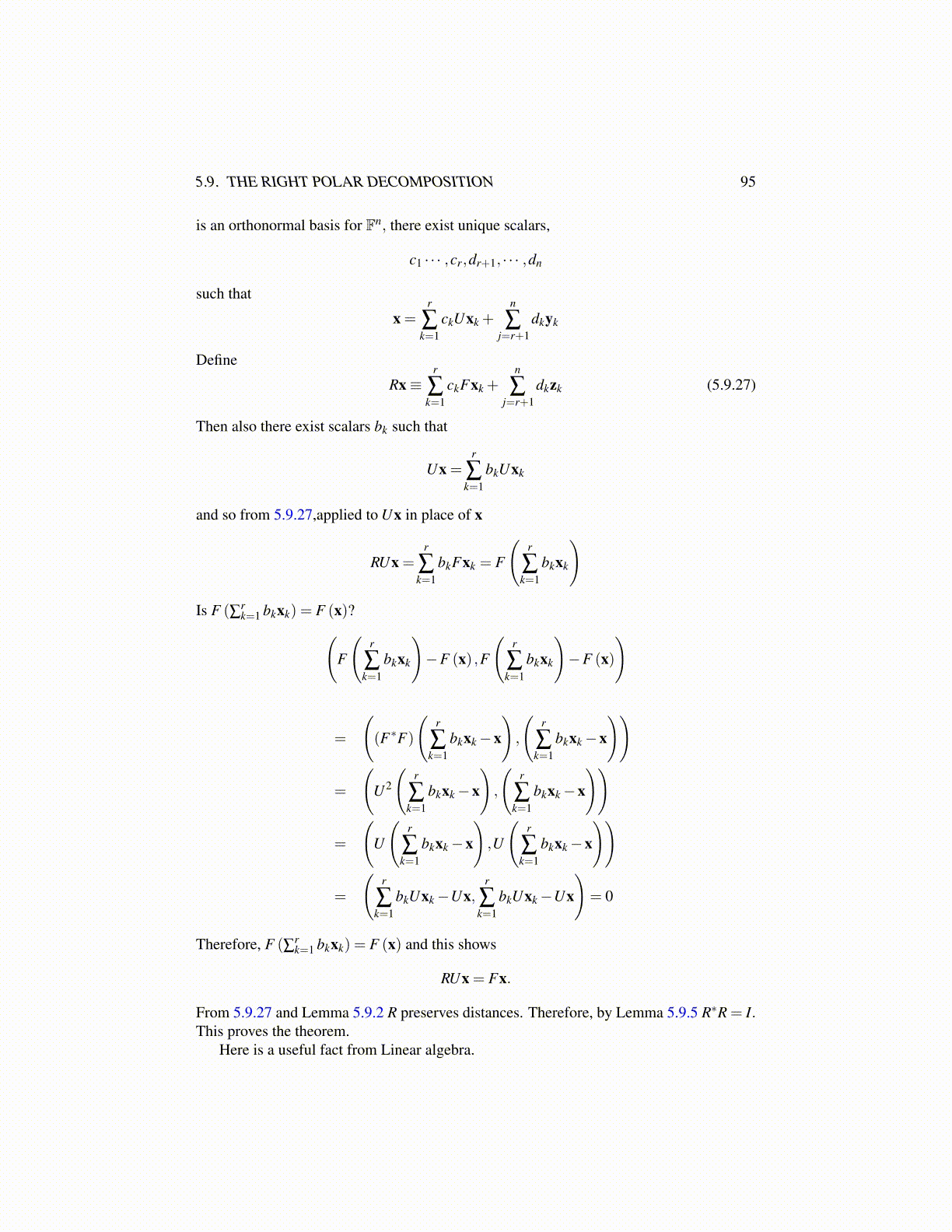
5.9. THE RIGHT POLAR DECOMPOSITION 95
is an orthonormal basis for Fn, there exist unique scalars,
c1 · · · ,cr,dr+1, · · · ,dn
such that
x =r
∑k=1
ckUxk +n
∑j=r+1
dkyk
Define
Rx≡r
∑k=1
ckFxk +n
∑j=r+1
dkzk (5.9.27)
Then also there exist scalars bk such that
Ux =r
∑k=1
bkUxk
and so from 5.9.27,applied to Ux in place of x
RUx =r
∑k=1
bkFxk = F
(r
∑k=1
bkxk
)
Is F (∑rk=1 bkxk) = F (x)?(
F
(r
∑k=1
bkxk
)−F (x) ,F
(r
∑k=1
bkxk
)−F (x)
)
=
((F∗F)
(r
∑k=1
bkxk−x
),
(r
∑k=1
bkxk−x
))
=
(U2
(r
∑k=1
bkxk−x
),
(r
∑k=1
bkxk−x
))
=
(U
(r
∑k=1
bkxk−x
),U
(r
∑k=1
bkxk−x
))
=
(r
∑k=1
bkUxk−Ux,r
∑k=1
bkUxk−Ux
)= 0
Therefore, F (∑rk=1 bkxk) = F (x) and this shows
RUx = Fx.
From 5.9.27 and Lemma 5.9.2 R preserves distances. Therefore, by Lemma 5.9.5 R∗R = I.This proves the theorem.
Here is a useful fact from Linear algebra.
5.9. THE RIGHT POLAR DECOMPOSITIONis an orthonormal basis for F”, there exist unique scalars,Cis: Crs p41," dnsuch thatx= Yee y ky k=! j=rt+lDefineRx = Vo pF xe + y AZyk=1 J=r+lThen also there exist scalars b; such thatUx = y? by UX,k=1and so from 5.9.27,applied to Ux in place of xRUx= y by FX, =F (x has]k=1k=1Is F (Ye OeXx) = F (x)?G (x nas] —F(x),F e has] _k=1 k=1k=1 k=1Therefore, F (Yp_ b¢Xx) = F (x) and this showsRUx = Fx.¥ bx, —Ux. ¥ b,Ux,—Ux(on (9) (0)((-s) (-)Laman)-095(5.9.27)From 5.9.27 and Lemma 5.9.2 R preserves distances. Therefore, by Lemma 5.9.5 R*R =I.This proves the theorem.Here is a useful fact from Linear algebra.